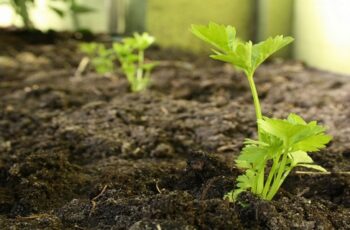Ad Blocker Detected
Our website is made possible by displaying online advertisements to our visitors. Please consider supporting us by disabling your ad blocker.
Epsom salt is a natural mineral that was first discovered in Epsom, England. People typically use Epsom salt in the bathroom to relieve aches and pains or internally as a laxative, but it is also a garden additive that expert gardeners swear by. It can help you produce lush, healthy plants, flowers, and trees.
Epsom salt, also known as magnesium sulfate, works well in the home garden because it gives fertilizer and soil a much-needed boost of both magnesium and sulfate. The additional minerals enable plants to receive more nutrition from the soil they are in. This in turn increases the plant’s output.
Want to know more about the ways you can use Epsom salt in your home garden? Keep reading.
1. Produce abundant nightshades
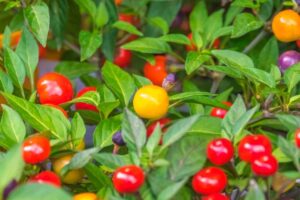
Many people enjoy growing plants from the nightshade family such as peppers tomatoes, eggplants and potatoes. All nightshades need a lot of magnesium so that they produce greater yields. Epsom salt also helps improve the flavor of nightshades. To ensure the nightshades you grow in your home garden are abundant and tasty, try adding 1 tablespoon (15 ml) of Epsom salt to your peppers and tomatoes by sprinkling it around the base of the plant. If you want the salt to dissolve more quickly, add it to a gallon (3.8 liters) of water and water the plants with the mixture. You should continue to add the Epsom salt to your plants every two weeks.
2. Nix garden pests
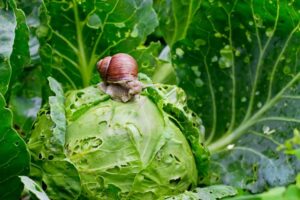
Garden pests are the worst. You spend a significant amount of time planting something that you enjoy, and the next thing you know, it’s ruined. Luckily, Epsom salt can help with this problem. Epsom salt won’t make snails and slugs wither away like table salt, but it does irritate them. Epsom salt works much like diatomaceous earth to keep unwanted pests at bay. The only caveat about using Epsom salt to deter pests is that it is water-soluble, so you will need to continuously reapply it.
3. Make fruit sweeter

Epsom salt, when added to trees, bushes, and vines that produce fruit, boosts the chlorophyll inside the plant. When plants have more chlorophyll, they have more energy. When they have more energy, they produce more sugar. More sugar means sweeter fruit for you to enjoy.
Read also: Top 10 Tips on Growing Cucumbers in The Home Garden
4. Stop transplant shock
When you start plants indoors for outdoor planting later on or move established potted plants to larger pots, sometimes the plants will get shocked and start to die on you. This phenomenon is known as transplant shock and happens because the plants’ roots were likely damaged during the transportation process. Epsom salt can help plants overcome transplant shock. If your plants are experiencing transplant shock, feed Epsom salt to them either by sprinkling on the topsoil near the base of the plant and then watering or putting a little salt into the hole or planter you will be planting your plant. Next, cover the salt with a little dirt before planting your plant on top.
5. Keep leaves green
 When plants don’t get their recommended daily amount of magnesium, their leaves start turning yellow. To remedy this common occurrence, feed your plants Epsom salt. Try feeding your plants 1 tablespoon (15 ml) of the mineral per 12 inches (30 cm) of height one time a month.
When plants don’t get their recommended daily amount of magnesium, their leaves start turning yellow. To remedy this common occurrence, feed your plants Epsom salt. Try feeding your plants 1 tablespoon (15 ml) of the mineral per 12 inches (30 cm) of height one time a month.6. Annihilate pesky weeds
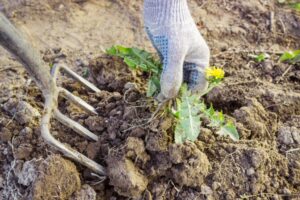
Only masochists like weeding their gardens. To cut down on weeding time, incorporate Epsom salt into your garden maintenance schedule. You can kill weeds by mixing a couple of cups of the mineral with a gallon (3.8 liters) of vinegar and some liquid dish detergent. Put the mixture in a spray bottle and go to town on any weeds you see. In no time at all, the weeds will die. Be careful not to spray any of this powerful stuff on plants you want to keep, or they will die.
7. Lush lawn fertilizer
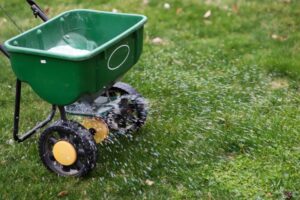
If your lawn isn’t lush and beautiful, it probably needs a little magnesium in its life. To perk up grass, add 3 pounds (1.35 kg) of Epsom salt to every 1,250 square feet (116 square meters) of grass and then watering your lawn.
8. Tree stump remover
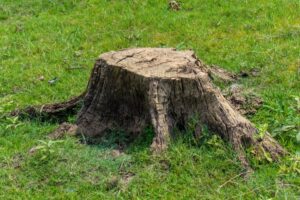
Tree stump removal can be costly, but if you don’t have the money to get a stump removed, let Epsom salt come to your rescue. Drill holes into the stump and filling in the holes with Epsom salt. In weeks, the stump will begin rotting.
